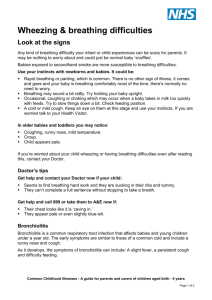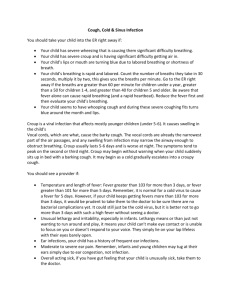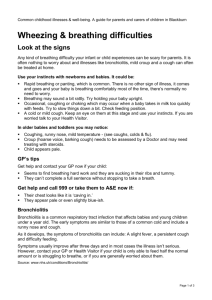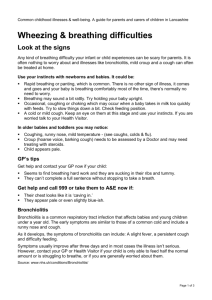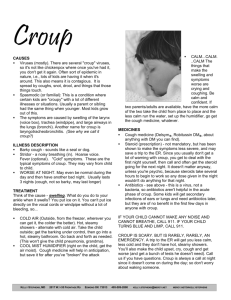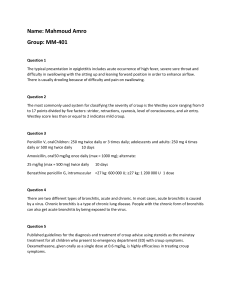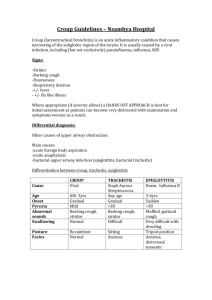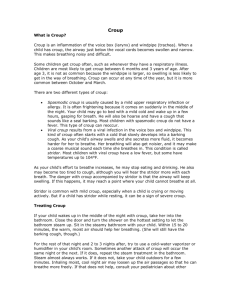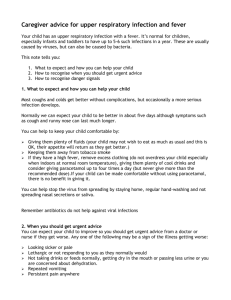Patient Information
advertisement
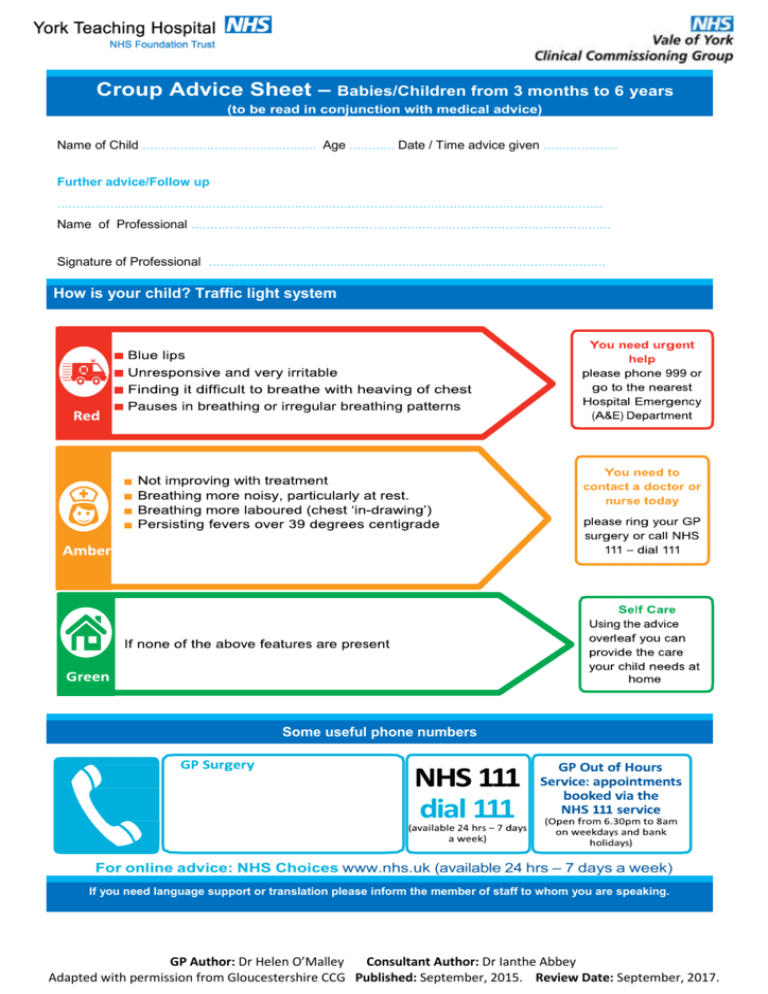
Croup Advice Sheet – Babies/Children from 3 months to 6 years (to be read in conjunction with medical advice) Name of Child ………………………………………. Age ………… Date / Time advice given ……………….. Further advice/Follow up ……………………………………………….……………………………………………………………………………... Name of Professional ………………………………………………………………………………………………… Signature of Professional …………………………………………………………………………………………… How is your child? Traffic light system – v Some useful phone numbers – For online advice: NHS Choices www.nhs.uk (available 24 hrs – 7 days a week) If you need language support or translation please inform the member of staff to whom you are speaking. GP Author: Dr Helen O’Malley Consultant Author: Dr Ianthe Abbey Adapted with permission from Gloucestershire CCG Published: September, 2015. Review Date: September, 2017. Croup Advice Sheet – Babies/Children from 3 months to 6 years (to be read in conjunction with medical advice) What is Croup? Croup is an inflammation of the voice box characterised by a typical dry barking cough and sometimes leading to difficulty in breathing. The condition most often affects small children. It is usually caused by a virus and occurs in epidemics particularly in the autumn and early spring. Croup usually starts with a mild fever and a runny nose. This progresses to a sore throat and a typical barking cough. Young children have smaller air passages and inflammation in the voice box leads to the gap between the vocal cords being narrowed. This may cause noisy breathing, which often starts in the middle of the night. Croup develops over a period of one or two days, the severity and time that it persists varies, but often symptoms are worse on the second night of the cough. Croup is caused by a virus and for that reason antibiotics are not normally helpful. Your GP may advise a single dose of steroid medication to help. How can I help my child? Be calming and reassuring. A small child may become distressed with croup. Crying can make things worse. Sit the child upright on your lap if their breathing is noisy or difficult. Let the child find a comfortable position. Give the child lots of cool drinks (if they are happy to take them). A cool environment such as taking your child outside at night for a brief period may help. Lower the fever. If a child has a high fever (high temperature) their breathing is often faster, and they may be more agitated and appear more ill. To lower a fever: o o Give paracetamol or ibuprofen Lightly dress the child if the room is not cold Be aware Steam used to be commonly advised as a treatment. It was thought that steam may loosen the mucus and make it easier to breathe. However, there is little evidence that this does any good. Also, some children have been scalded by steam whilst being treated for coup. Therefore, steam is not recommended. Also, DO NOT make a child with breathing difficulty lie down or drink fluids if they don’t want to, as that could make breathing worse. GP Author: Dr Helen O’Malley Consultant Author: Dr Ianthe Abbey Adapted with permission from Gloucestershire CCG Published: September, 2015. Review Date: September, 2017.
